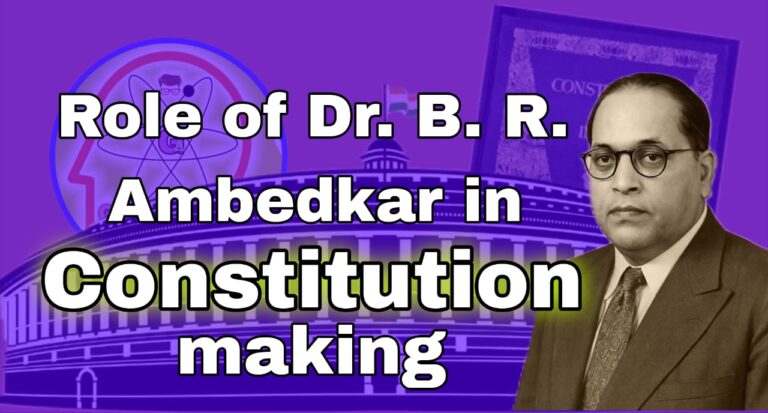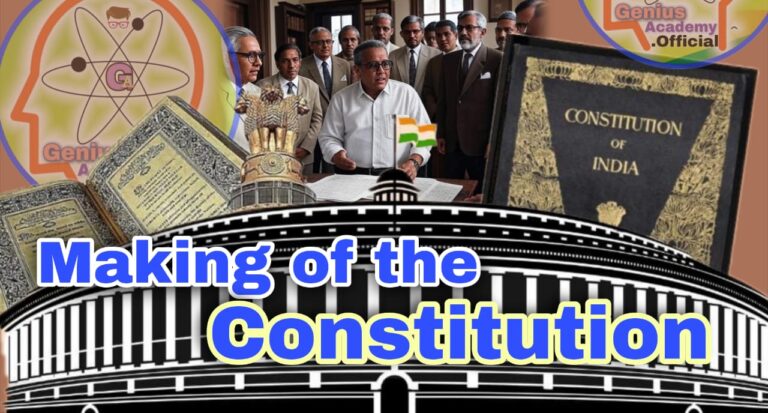Global Wage Report 2024-25: Detailed Analysis
The International Labour Organization (ILO) has released the Global Wage Report 2024-25, offering critical insights into global wage trends, regional disparities, gender wage gaps, and the relationship between productivity and wages. This comprehensive report not only tracks historical trends but also provides actionable recommendations to address wage inequality and ensure inclusive economic growth.
- Established Context: The Global Wage Report is an annual flagship publication of the ILO, first introduced in 2008.
- Objective: It focuses on wage trends, changes in wage inequality, real wage growth, and the broader dynamics of global labor markets.
- Significance: The report is a vital tool for policymakers, labor economists, and stakeholders in designing strategies for equitable wage systems.
Major Highlights of the Report
1. Decrease in Wage Inequality
- Wage inequality has reduced at an average annual rate of 11.1% globally since 2000.
- However, disparities persist, particularly in low-income countries, where nearly 22% of workers earn less than half the median hourly wage.
2. Increase in Global Wages
- Real wages globally grew by 1.8% in the past year. Projections for 2024 anticipate a 2.7% increase, marking the highest growth in over 15 years.
- This growth reflects economic recovery after the negative global wage growth of -0.9% in 2022, attributed to inflationary pressures and post-pandemic disruptions.
3. Regional Disparities
- While Asia-Pacific and emerging economies reported robust wage growth, regions like Africa, North America, and parts of Europe experienced stagnant or negative real wage growth due to inflation, geopolitical tensions, and slower economic recovery.
4. Persistent Wage Inequality
- Low-income nations face higher wage inequality compared to high-income countries.
- High-income nations reported a 29% rise in productivity from 1999 to 2024, yet real wages grew only by 15%, showcasing a disconnect between productivity and wage growth.
5. Gender Wage Gap
- Women continue to face significant wage disparities, particularly in lower-middle-income economies.
- Overrepresentation in informal and low-paid jobs exacerbates the gender wage gap.
Indian Scenario
1. Progress in Wage Equality
- India has shown significant improvement, with the share of low-paid wage workers (earning less than 50% of the median hourly wage) declining by 6.3% annually between 2008 and 2018.
Current Data
- Share of low-paid workers in India: 9.5%.
- Comparative regional figures:
- Pakistan: 9.4%
- Nepal: 10.5%
- Bangladesh: 11.2%
- Sri Lanka: 25.9%
2. Economic Trends
- India has outperformed several neighboring countries in reducing wage inequality.
- Despite progress, challenges persist in bridging wage disparities across sectors and ensuring equitable growth.
Key Challenges Identified
- Inflationary Pressures: Real wages often fail to keep pace with inflation, affecting purchasing power.
- Regional Disparities: Wage growth in advanced economies remains sluggish compared to emerging markets.
- Gender Inequality: Persistent gaps in wages and representation for women workers.
- Decoupling of Productivity and Wages: A global phenomenon where increased productivity has not translated into proportional wage growth.
- Low Minimum Wages: Inadequate minimum wage levels in many regions, leaving low-income workers vulnerable.
ILO Recommendations
1. Minimum Wage Adjustments
- Periodic adjustments aligned with inflation to protect low-wage earners and enhance purchasing power.
2. Strengthened Worker Protections
- Legal frameworks to ensure fair treatment, job security, and protections against exploitative practices.
3. Bridging Gender Gaps
- Policies ensuring equal pay for equal work and addressing structural barriers that limit women’s participation in formal, high-paying jobs.
4. Equitable Sharing of Productivity Gains
- Mechanisms to link productivity improvements directly to wage growth, ensuring workers benefit from economic advancements.
5. Promoting Social Dialogue
- Enhanced collaboration among governments, employers, and workers to develop consensus-driven policies on wage structures.
ILO & Its Significance
About International Labour Organization
| International Labour Organization (ILO) & Its Significance |
|---|
| ● ILO & Its Significance ● Established: 1919, as part of the Treaty of Versailles; became the first specialized UN agency in 1946. ● Members: 187 countries. ● Purpose: To set labor standards, develop policies, and promote decent work globally. ● Structure: Tripartite model involving governments, employers, and workers. ● Headquarters: Geneva, Switzerland. ● Major Reports: ● World Employment and Social Outlook (WESO) ● Global Wage Report ● World Social Protection Report ● World of Work Report ● Employment Outlook for Youth |
Analysis and Observations
Global Trends
- The decline in wage inequality marks a significant milestone, but disparities between regions underline the importance of context-specific strategies.
- Emerging economies like India, China, and Indonesia have showcased stronger growth in wages compared to stagnation in the US and EU.
India’s Position
- India’s proactive measures in addressing wage disparities have set a positive precedent for developing economies.
- However, challenges such as informal employment, unregulated minimum wages, and underrepresentation of women in high-paying sectors remain areas of concern.
Gender Inequality
- Persistent gaps highlight the urgent need for systemic reforms to empower women through access to education, skill development, and formal employment opportunities.
Way Forward
Policy Measures
1. Enhancing Minimum Wages
- Develop inflation-linked minimum wages to safeguard low-income workers.
2. Focus on Skill Development
- Initiatives to upskill workers and ensure employability in high-growth sectors.
3. Strengthening Institutions
- Equip labor regulatory bodies with resources and authority to enforce fair wage practices.
4. Promoting Gender Parity
- Policies encouraging women’s participation in STEM fields and leadership roles.
5. Global Collaboration
- Sharing best practices among nations to address common challenges like wage stagnation and inflation.
Technological Integration
- Leverage AI and data analytics to identify wage trends, predict disparities, and develop targeted interventions.
Public Awareness Campaigns
- Promote awareness about wage rights and avenues for grievance redressal among workers.
Conclusion
The Global Wage Report 2024-25 underscores the critical role of fair wages in driving economic equity and social stability. While the global decline in wage inequality and India’s progress are encouraging, persistent challenges like regional disparities and gender gaps necessitate sustained policy focus. By implementing the ILO’s recommendations and fostering inclusive growth, nations can ensure a future where economic prosperity benefits all.
Daily Mains Practice Questions
UPSC (CSE) Mains Questions on Global Wage Report 2024-25
General Studies Paper II
| [Q1.] “Global wage inequality has reduced significantly in the 21st century, but challenges persist.” Discuss the role of international organizations like the ILO in reducing wage disparities. (250 words) |
| [Q2.] Analyze the findings of the Global Wage Report 2024-25 with reference to wage inequality, productivity growth, and gender disparity. How can India address these issues? (250 words) |
| [Q3.] Examine the regional disparities in wage growth highlighted in the Global Wage Report 2024-25. Suggest policy measures to address stagnation in real wages in low-income and middle-income countries. (250 words) |
| [Q4.] What role does the ILO play in setting global labor standards? Discuss the relevance of its Global Wage Report in shaping labor policies in emerging economies like India. (250 words) |
General Studies Paper III
| [Q5.] “Despite economic recovery, regional and gender-based wage disparities persist globally.” Discuss the economic implications of such disparities and suggest measures to address them. (250 words) |
| [Q6.] How does the decoupling of productivity growth and real wages impact economic development? Analyze with examples from the Global Wage Report 2024-25. (250 words) |
| [Q7.] Highlight the importance of minimum wage adjustments in addressing global wage inequality. Suggest ways for India to improve its minimum wage policies based on the report’s findings. (250 words) |
| [Q8.] Critically analyze the gender wage gap in India and its neighboring countries as highlighted in the Global Wage Report 2024-25. What strategies can India adopt to promote wage equity? (250 words) |
Essay
| [Q1.] “Inclusive wage growth: The pathway to equitable economic development.” Discuss with reference to the ILO’s Global Wage Report. |
| [Q2.] “The Gender Wage Gap: A persistent barrier to economic parity.” Critically examine the global and Indian scenarios based on recent wage trends. |
FAQs on Global Wage Report and Related Topics
1. What is the Global Wage Report?
Answer:—
The Global Wage Report is an annual publication by the International Labour Organization (ILO) that analyzes wage trends globally and regionally. It covers issues like wage inequality, real wage growth, gender disparities, and the relationship between productivity and wages.
2. Why is the Global Wage Report significant?
Answer:—
- It provides data-driven insights for policymakers and stakeholders.
- Helps in identifying wage trends and regional disparities.
- Offers recommendations for fair and inclusive wage policies globally.
3. What are the major findings of the Global Wage Report 2024-25?
Answer:—
- Decrease in Wage Inequality: A decline in global wage inequality by 11.1% annually since 2000.
- Growth in Real Wages: Global real wages grew by 1.8% last year, with a projected growth of 2.7% in 2024.
- Regional Disparities: Stagnant or negative wage growth in parts of Africa, Northern America, and Europe.
- Gender Disparity: Persistent wage gap due to structural inequalities, particularly in low-income countries.
4. What does the report say about wage growth in India?
Answer:—
- India has significantly reduced the share of low-paid wage workers by 6.3% annually between 2008 and 2018.
- The share of workers earning less than half the median hourly wage stands at 9.5%.
5. What are the key challenges in achieving equitable wage growth?
Answer:—
- Inflationary pressures that erode real wages.
- Regional disparities in wage growth.
- Gender wage gap and underrepresentation of women in high-paying jobs.
- Disconnect between productivity and wage growth.
6. How does the ILO address wage inequality?
Answer:—
The ILO promotes:
- Minimum wage policies aligned with inflation.
- Worker protections to ensure fair treatment.
- Gender parity initiatives for equal pay.
- Data-driven recommendations through reports like the Global Wage Report.
7. What measures are suggested to address wage disparities?
Answer:—
- Periodic minimum wage adjustments to combat inflation.
- Policies to bridge the gender wage gap.
- Equitable sharing of productivity gains through wage-linked performance models.
8. What role does India play in global wage trends?
Answer:—
India’s initiatives to reduce low-paid workers and promote wage equality serve as a model for emerging economies, despite challenges like informal employment and gender disparities.
9. What is the connection between productivity growth and wage growth?
Answer:—
The report highlights that real wages have not kept pace with productivity growth, especially in high-income countries, indicating the need for better mechanisms to share productivity gains equitably with workers.
10. How can global collaboration help address wage inequality?
Answer:—
Sharing best practices, fostering international cooperation, and leveraging data from reports like the Global Wage Report can help countries design effective wage policies and address systemic disparities.





